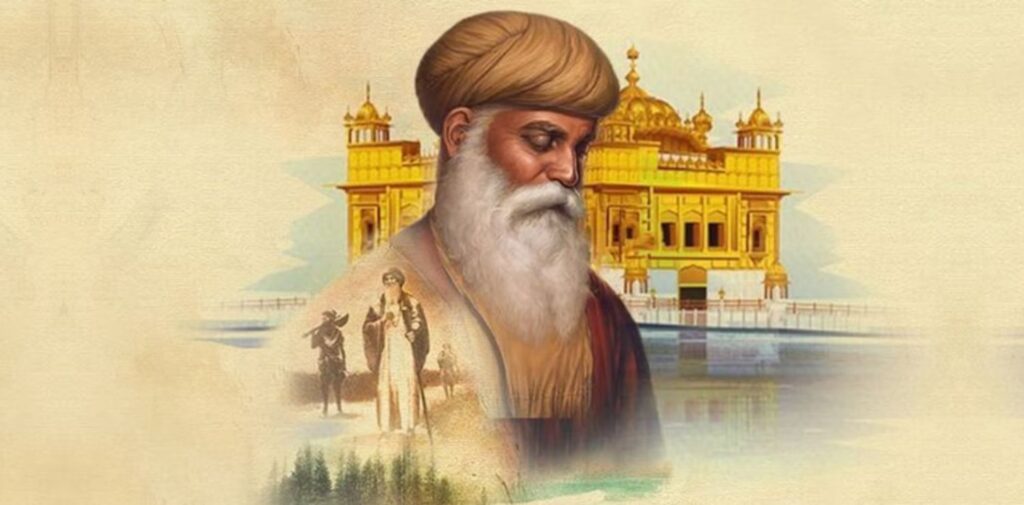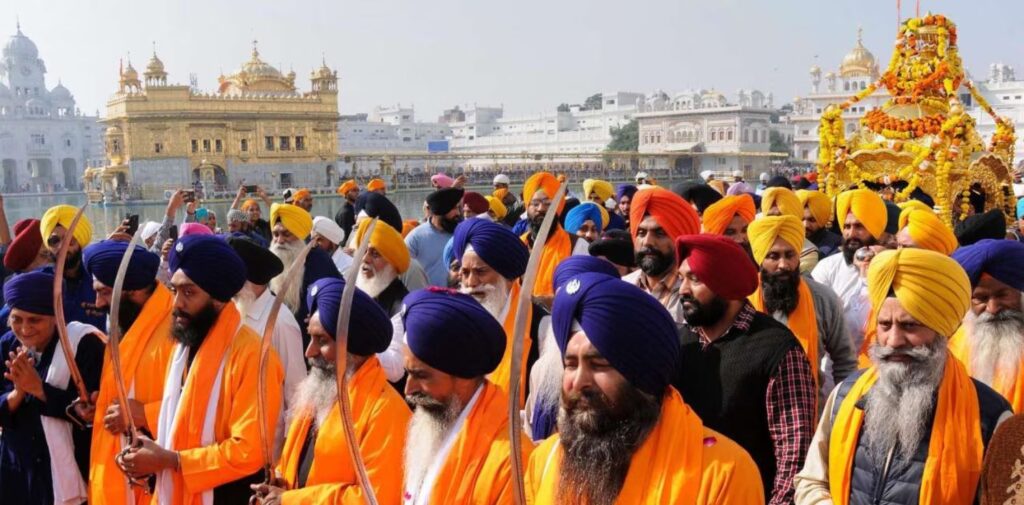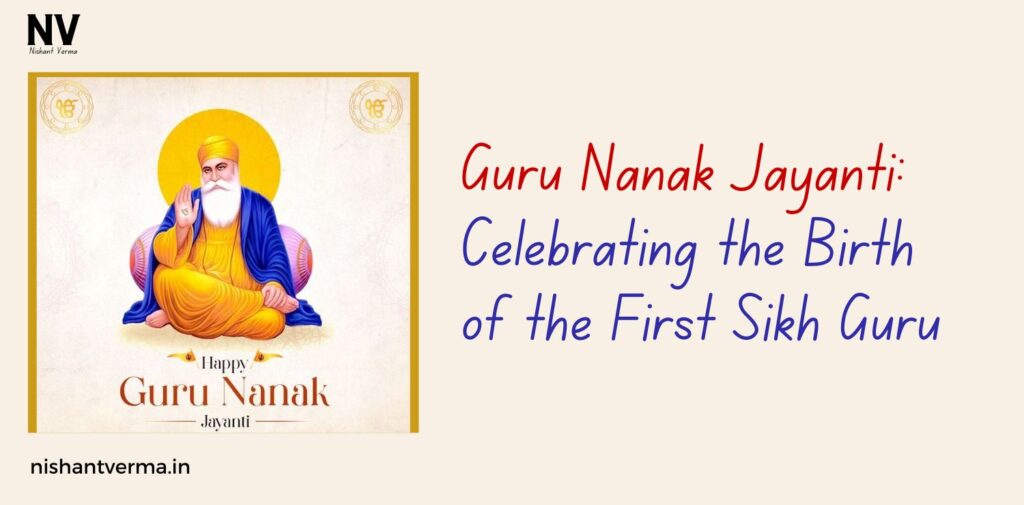Guru Nanak Jayanti, also known as Gurpurab, is one of the most significant religious festivals celebrated by Sikhs around the world. It marks the birth of Guru Nanak Dev Ji, the founder of Sikhism. This special day is celebrated with great devotion, love, and reverence, and it holds deep spiritual and cultural importance for millions of Sikhs globally. In 2024, Guru Nanak Jayanti will be observed on November 15.
In this article, we will explore the life of Guru Nanak Dev Ji, the significance of Guru Nanak Jayanti, and how it is celebrated with enthusiasm and devotion.
Who Was Guru Nanak Dev Ji?
Guru Nanak Dev Ji was born on April 15, 1469, in the village of Rai Bhoi Ki Talwandi (present-day Nankana Sahib, in Pakistan). He was born into a Hindu family, but from a very young age, Guru Nanak showed a deep spiritual nature. He was not interested in worldly possessions or rituals; instead, he sought the truth and the deeper meaning of life.
Guru Nanak’s teachings broke away from the rigid religious boundaries that existed at the time. His message was simple yet profound: “There is no Hindu, there is no Muslim.” Guru Nanak believed in the oneness of all human beings and taught that the path to God was through love, humility, and service to others. He emphasized the importance of meditation, truth, and compassion as ways to connect with the Divine.
Guru Nanak’s teachings are captured in the Guru Granth Sahib, the holy scripture of Sikhism, which contains hymns and writings from Guru Nanak and other Sikh Gurus. These teachings continue to guide and inspire millions of people around the world.

Significance of Guru Nanak Jayanti
Guru Nanak Jayanti is a celebration of the birth of Guru Nanak Dev Ji, but it is more than just a birthday. It is a time to reflect on his teachings and to renew one’s commitment to living a life of service, humility, and devotion. The day is also an opportunity for Sikhs to come together, sing hymns, listen to the teachings from the Guru Granth Sahib, and engage in community service.
Guru Nanak’s philosophy revolved around the following key principles:
- Oneness of God: Guru Nanak taught that there is only one God, and He is the Creator of all. This belief in the oneness of God is central to Sikhism.
- Equality of All People: Guru Nanak rejected the caste system and advocated for equality. He believed that all people, regardless of their race, religion, or social status, are equal in the eyes of God.
- Selfless Service (Seva): One of the key practices of Sikhism is Seva, or selfless service. Guru Nanak emphasized that one should serve others without expecting anything in return.
- Honest Living: Guru Nanak encouraged people to earn an honest living and avoid cheating or exploiting others. He believed that work should be done with integrity and sincerity.
The festival of Guru Nanak Jayanti is a reminder of these values and gives Sikhs the chance to reaffirm their commitment to these teachings.

How is Guru Nanak Jayanti Celebrated?
Guru Nanak Jayanti is celebrated with great enthusiasm and reverence in India and across the globe. The celebrations typically last for two days, beginning with the Prabhat Pheris (early morning processions) and culminating in the Nagar Kirtan (a procession of singing hymns) on the day of Guru Nanak Jayanti.
- Prabhat Pheris (Early Morning Processions): On the morning of Guru Nanak Jayanti, Sikhs gather at Gurudwaras (Sikh temples) to begin the day with Kirtan (devotional singing) and path (recitation of prayers). Devotees go on early morning processions called Prabhat Pheris, which are led by the singing of hymns and the playing of traditional instruments like the tabla and dholak. The atmosphere is filled with spiritual energy as people walk through the streets singing praises of the Guru.
- Nagar Kirtan (Processions with Singing of Hymns): The main highlight of Guru Nanak Jayanti is the Nagar Kirtan, a grand procession that is organized in almost every Gurudwara across the world. The procession is led by the Panj Pyare (Five Beloved Ones), who are dressed in traditional Sikh attire. The Guru Granth Sahib is carried in a decorated palanquin, and the sangat (congregation) follows the procession while singing hymns (Kirtan). The kirtan is accompanied by the rhythmic beat of drums and other musical instruments. The procession is a colorful and lively event, with people of all ages participating in the celebrations. It is not only a spiritual event but also a community gathering where people come together to celebrate and share the joy of Guru Nanak’s teachings.
- Langar (Community Meal): One of the most beautiful aspects of the Guru Nanak Jayanti celebrations is the Langar—a free community kitchen that serves food to all, regardless of their background or social status. Guru Nanak believed that food should be shared with everyone, and no one should go hungry. Langar serves as a reminder of Guru Nanak’s teaching of selfless service and equality. It is an important part of the celebration, as Sikhs prepare and serve food to anyone who comes, irrespective of religion, race, or nationality.
- Reading of the Guru Granth Sahib: On Guru Nanak Jayanti, Sikhs gather at Gurudwaras for the Akhand Path, a continuous reading of the Guru Granth Sahib. This reading usually takes place over 48 hours and is a way to honor the teachings of Guru Nanak. The reading is accompanied by Kirtan and spiritual discussions that help the devotees connect with the teachings of the Guru.
- Fasting and Prayers: Some Sikhs observe fasting or spend the day in prayer and meditation on Guru Nanak’s teachings. It is a day for self-reflection and a time to strengthen one’s connection with God.

The Global Celebration of Guru Nanak Jayanti
While Guru Nanak Jayanti is most widely celebrated in India, it is also observed in countries with large Sikh communities, such as the United States, Canada, the United Kingdom, and Malaysia. Sikhs around the world come together to mark the occasion by participating in prayers, processions, and community service.
In countries where there is no local Gurudwara, Sikhs often organize community events and gatherings to celebrate Guru Nanak Jayanti. In large cities, you may see grand processions, and the streets are often decorated with flags and banners, while Sikhs sing hymns and chant prayers.
Why Guru Nanak Jayanti Matters
Guru Nanak Jayanti is not just a religious celebration; it is a reminder of the importance of living a life based on truth, love, and service. In a world filled with divisions, Guru Nanak’s message of unity and equality is more relevant than ever. His teachings remind us that we are all connected, and that serving others and living a truthful life are the keys to spiritual growth and peace.
Conclusion: A Celebration of Unity and Peace
Guru Nanak Jayanti is a time to reflect on the life and teachings of Guru Nanak Dev Ji, the great spiritual leader who transformed the way people think about God, humanity, and service to others. It is a day to come together, not only as Sikhs but as human beings, to celebrate the shared values of kindness, equality, and love that Guru Nanak promoted.
As we celebrate Guru Nanak Jayanti on November 15, 2024, let us remember the timeless wisdom of Guru Nanak and strive to live a life that reflects his teachings of unity, compassion, and selfless service. Whether through prayer, meditation, or acts of kindness, we can all honor Guru Nanak’s legacy and bring his message of peace and harmony into the world.




